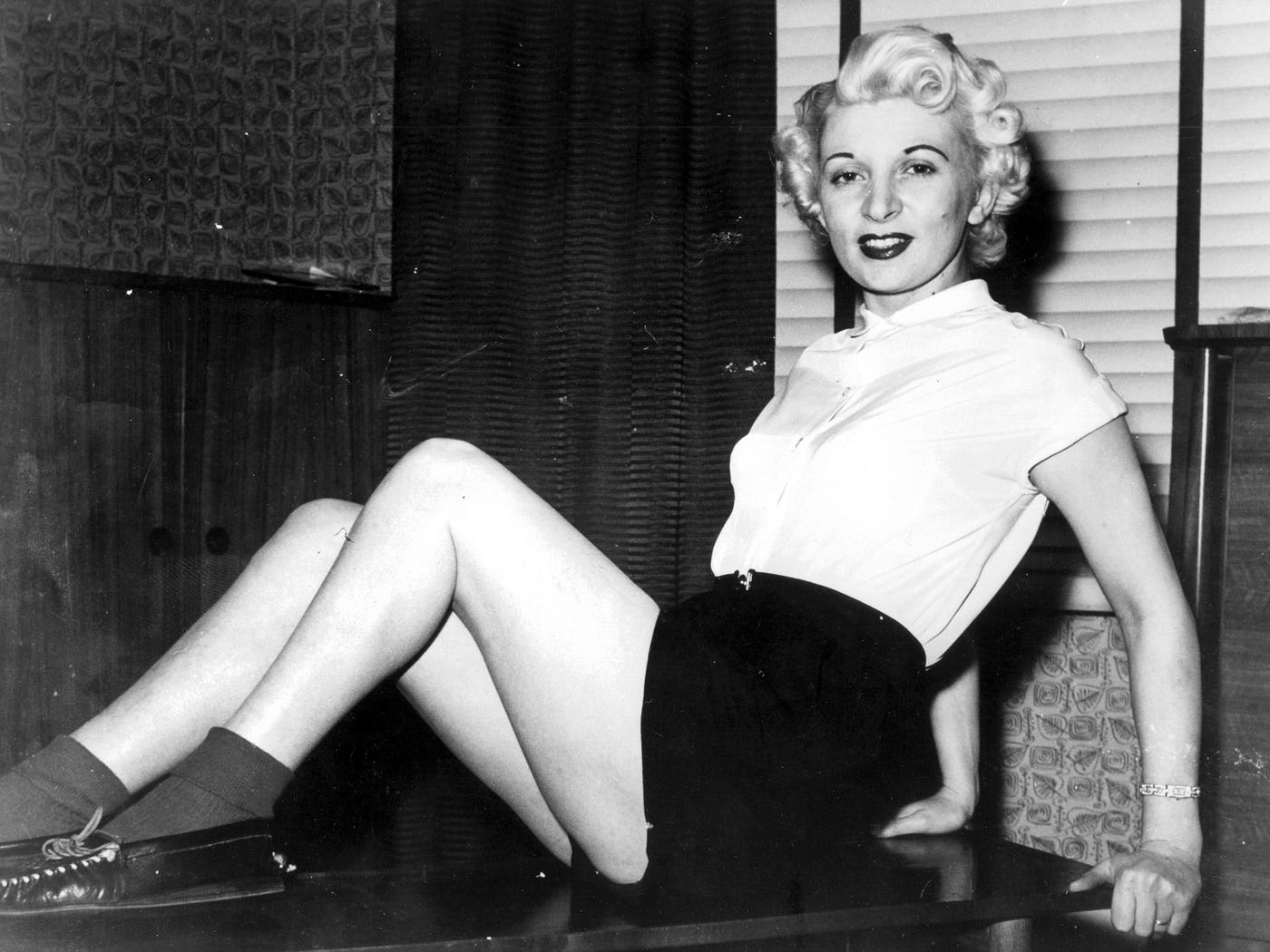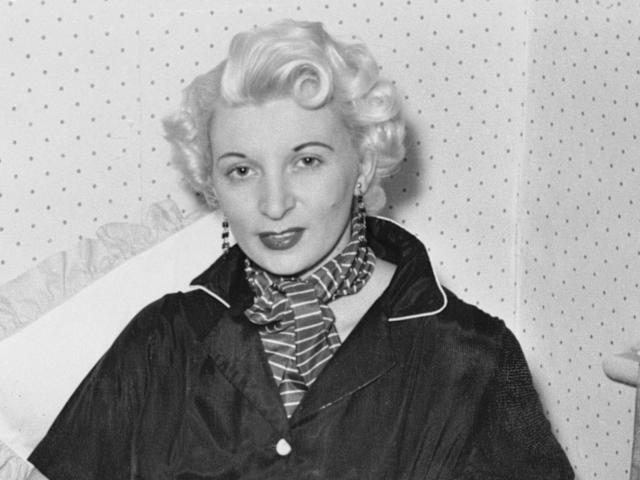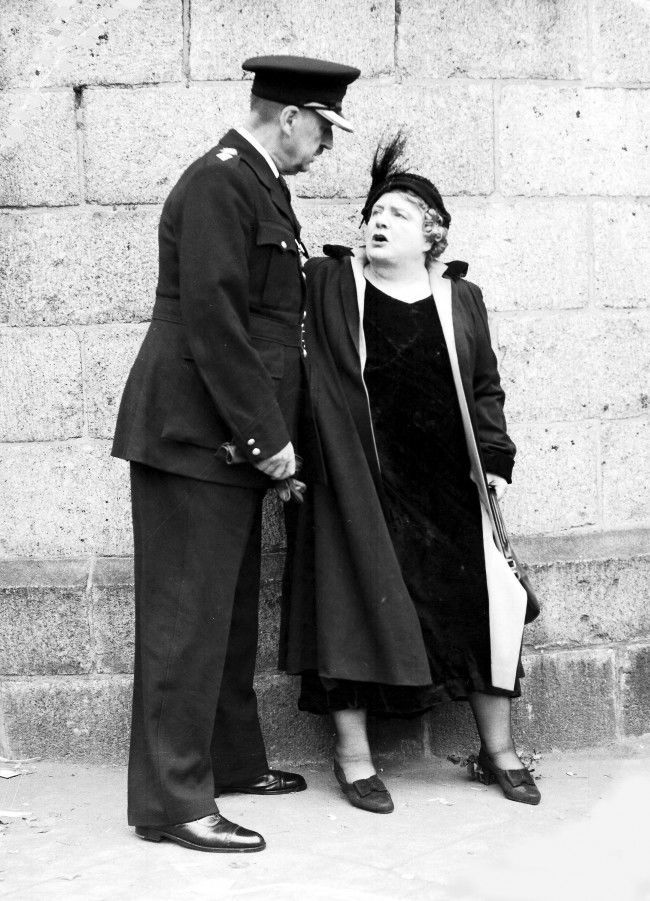“The Hanging That Shocked a Nation: The Ruth Ellis Story”

On July 13, 1955, Britain executed Ruth Ellis, a 28-year-old former nightclub hostess and mother of two. Her crime: the fatal shooting of her abusive lover, David Blakely. Her punishment: death by hanging, making her the last woman to be executed in the United Kingdom.
Her case captivated and horrified the public, not only because of the brutal finality of capital punishment but because Ruth’s story exposed deeper truths about gender, justice, domestic abuse, and class inequality. The execution of Ruth Ellis was not just a legal event—it was a moment that shocked a nation, ignited a firestorm of public protest, and helped pave the way for the abolition of the death penalty in Britain.

Who Was Ruth Ellis?
Born Ruth Neilson on October 9, 1926, in Rhyl, Wales, she came from a modest, working-class family. Her father was a cellist from Manchester, and her mother, a Belgian refugee. Ruth moved to London as a teenager during WWII, taking up various jobs, including as a waitress and photographic model. Her striking blonde looks and natural poise soon led her into the city’s nightclub scene, where she worked as a hostess, entertaining wealthy male patrons.
Ruth’s personal life was turbulent. She had two children by different men, one of whom she gave up for adoption. She married George Ellis, a violent, alcoholic dentist, but the marriage quickly broke down. By the early 1950s, she was living a precarious life—caught between glamour and survival, dependent on the generosity of male companions and working in clubs to support herself and her young son, Andy.
A Fatal Love Affair: Ruth and David Blakely
In 1953, Ruth met David Blakely, a 25-year-old upper-class amateur racing driver. He was good-looking, charming, and lived a life of privilege. The relationship between Ruth and David was passionate but deeply toxic, marked by alcohol-fueled arguments, jealousy, infidelity, and violence.
Blakely, engaged to another woman and often dismissive of Ruth, would physically and emotionally abuse her. Ruth, in turn, became possessive and emotionally dependent. Despite the harm, she clung to the relationship—perhaps out of love, desperation, or hope for stability.
Their affair spiraled into an emotional abyss, culminating in tragedy just two years after they met.
The Murder: April 10, 1955
On Easter Sunday, Ruth waited outside the Magdala pub in Hampstead, North London, where she knew David Blakely would be. As he exited the pub and ignored her, attempting to get into his car, Ruth pulled a .38 caliber revolver and fired five shots. Two of them hit Blakely—one in the back and one in the head—killing him instantly. She then calmly surrendered to a nearby police officer and admitted:
“It’s obvious when I shot him I intended to kill him.”
There was no attempt to flee, no plea for mercy—just resignation.

The Trial: A Swift and Harsh Judgment
Ruth Ellis’s trial at the Old Bailey began on June 20, 1955. It lasted just two days. Her guilt was never in question—she openly confessed. Under the law at the time, a murder conviction with intent was an automatic death sentence.
However, the courtroom failed to explore the full story. Ruth’s defense team did not present key elements such as the abuse she endured, her mental state, or the emotional toll of her relationship. Evidence of miscarriage, beatings, and trauma was dismissed or never mentioned. The jury deliberated for only 23 minutes before returning a guilty verdict.
On June 21, she was sentenced to death by hanging.
Public Outcry and the Call for Mercy
Almost immediately, the public began protesting. Ruth’s story touched a nerve across Britain. She was not seen as a cold-blooded killer but as a tragic figure, pushed beyond her limits by a brutal relationship and a lack of societal support.
Tens of thousands signed petitions. Newspapers campaigned for a reprieve. Members of Parliament, prominent intellectuals, and ordinary citizens alike called on the Home Secretary, Gwilym Lloyd George, to commute her sentence.
But the government remained unmoved. Ruth was scheduled to die on July 13, 1955 at Holloway Prison in London.
The Execution: A Nation Watches in Silence
Despite the national uproar, Ruth Ellis was hanged at 9:00 a.m. by executioner Albert Pierrepoint, one of Britain’s most infamous hangmen. Her body was buried in an unmarked grave inside the prison, later moved to Amersham in Buckinghamshire.
The silence that followed was more powerful than protest. The execution of a young mother, whose life was defined by poverty, violence, and heartbreak, became a symbol of injustice.
Aftermath and Historical Impact
Ruth Ellis’s execution had a profound impact on British society. Over the following decade, it became clear that her death had changed the public’s perception of capital punishment.
Key Consequences:
- The case became a rallying point for anti-death penalty activists.
- It exposed the gender bias and rigidity of the British legal system.
- It highlighted the lack of protection for women in abusive relationships.
By 1965, Britain officially abolished the death penalty for murder. While the legal system had been slow to evolve, Ruth Ellis’s case had planted the seed for that monumental shift.
Legacy and Cultural Memory
Ruth Ellis’s life and death have remained in the public consciousness for decades. Her story has been retold in:
- Films, most notably Dance with a Stranger (1985), starring Miranda Richardson.
- Books, including autobiographies, legal critiques, and feminist analyses.
- Theatre productions, documentaries, and podcasts.
To some, she is a victim of circumstance and cruelty. To others, a cautionary tale of how emotion and desperation can destroy lives. But nearly all agree: Ruth Ellis did not receive justice, and her execution was a national tragedy.

Conclusion: Justice or Injustice?
“The Hanging That Shocked a Nation” was not just about Ruth Ellis—it was about Britain itself, facing a mirror. Her case exposed a justice system that could execute a battered woman without compassion or understanding. It awakened a nation to the realities of gender, trauma, and systemic failure.
In the end, Ruth Ellis died for her crime—but her death breathed life into a movement that changed British law and society forever.




